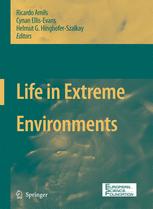

Most ebook files are in PDF format, so you can easily read them using various software such as Foxit Reader or directly on the Google Chrome browser.
Some ebook files are released by publishers in other formats such as .awz, .mobi, .epub, .fb2, etc. You may need to install specific software to read these formats on mobile/PC, such as Calibre.
Please read the tutorial at this link: https://ebookbell.com/faq
We offer FREE conversion to the popular formats you request; however, this may take some time. Therefore, right after payment, please email us, and we will try to provide the service as quickly as possible.
For some exceptional file formats or broken links (if any), please refrain from opening any disputes. Instead, email us first, and we will try to assist within a maximum of 6 hours.
EbookBell Team

4.4
42 reviewsFrom the deepest seafloor to the highest mountain, from the hottest region to the cold Antarctic plateau, environments labeled as extreme are numerous on Earth and they present a wide variety of features and characteristics. The life processes occurring within these environments are equally diverse, not only depending on stress factors (e.g. temperature, pressure, pH and chemicals) but also on the type of life forms, ranging from microbes to higher species. How is life limited by and adapted to extreme external biotic and abiotic factors? This key question summarises the deliberations raised by this exciting and fascinating research area. Addressing the challenge of answering this question would help to reveal new insights and refine theories concerning the origin and evolution of life on our planet, as well as life beyond Earth. Investigating life processes under extreme conditions can also bring clues for understanding and predicting ecosystems' responses to global changes. Furthermore, this area of research has a wide application potential in the fields of (bio)technoloty, chemical industry, pharmaceutics, biomedicine or cosmetics.
(Investigating Life in Extreme Environments - A European perspective, European Science Foundation, May 2007)